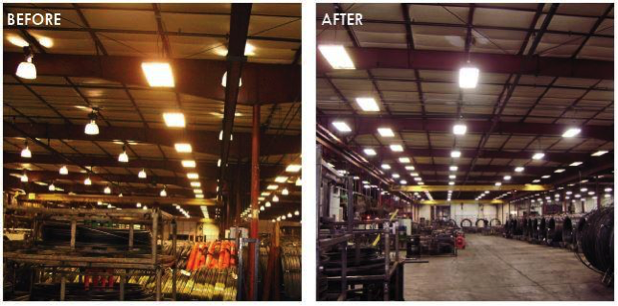
Energy Efficiency: The Bridge To Better Outcomes
Urjanet Inc | October 11, 2016 | Energy & Sustainability
This guest blog post was written by Zach Shelin, Associate at The Cadmus Group.
When energy efficiency projects are proposed to organizational leaders, these decision-makers often balk at the idea at first. They may be distracted by other priorities and worried about the project’s cost, the effort it would require of their staff, and whether the project will provide enough value to justify the spending and extra hassle. When proponents of these projects attempt to convince managers and supervisors to move forward with a project, they often pigeonhole the project’s benefits by focusing solely on utility cost savings. For some organizations, the simple payback of utility cost savings for certain projects is enough to justify their approval. But in other organizations, decision-makers often need to see more concrete and compelling outcomes to justify the investment of capital and staff time.
Here’s where the title of our blog post comes in: The secret of energy efficiency is that it can serve as a bridge to bigger benefits that can affect the entire organization in positive, tangible ways. With this mindset, you can begin to think of energy efficiency as a means to achieve higher priorities. Energy efficiency improvements solve burning pains that go far beyond utility costs. These stories show how energy efficiency triggers benefits that are guaranteed to get the attention of high-level decision-makers:
The photos below show the ‘Before’ and ‘After’ images of a lighting retrofit in a warehouse. Which do you think mattered more to the warehouse manager after the retrofit: the energy savings or the significant improvements in worker productivity and safety thanks to improved vision? An energy efficiency project was the bridge that led this warehouse to realize these visible improvements.

A multi-family housing complex in Buffalo, New York, was dealing with a massive 15.7 percent vacancy rate. Vacancies in multi-family housing mean less revenue and higher maintenance and turnover costs for the building owners. Building management then ordered a retrofit to improve the efficiency of the building’s heating systems. Once the improved heating system was in place, keeping the building warm throughout the winter, that vacancy rate plunged down to two percent. The housing complex was able to attract new tenants and retain existing tenants with the completion of the retrofit.
Another example highlights a grocery store that replaced old fluorescent lights with new LEDs, and realized a 19 percent increase in store sales shortly after. Poor functioning lighting can yield fewer sales because product visibility isn’t optimized, and customers may assume that if the lighting fixtures aren’t working, the refrigeration may also be faulty. For this retailer, the increase in sales essentially paid for the lighting retrofit within five months. Even if the store’s sales had only increased 3 percent, that boost in sales alone would have paid for the project in under a year.
The third example is an anecdote of an HVAC vendor that creatively convinced a school district to take on an HVAC renovation project after the district budget director initially turned down the idea. The school district’s main focus at the time was financing a computerization initiative that required 1,600 iPads in classrooms across the district. That left little room in the budget for the proposed HVAC project. When the HVAC vendor learned of this, they came up with a different way to frame the renovation project: Installing the new and more efficient HVAC system would bring significant monthly cost savings, along with capital from the utility as an incentive for the project. These savings and incentives would more than cover the cost of those 1,600 iPads. The budget director ultimately approved the project, understanding that this was no longer an HVAC project, but instead an iPad project.
If you’re not talking about these wider benefits when speaking to decision-makers about your energy efficiency project, you’re selling yourself short. Get creative when framing the value of energy efficiency and energy management, do your homework, and start collecting data from stakeholders about the additional benefits energy efficiency projects have brought them. Soon you’ll see how your energy management programs can lead to better outcomes, and to the goals that you and your organization really want in the end.
About The Cadmus Group
The Cadmus Group provides professional consulting services and customized solutions that address complex challenges facing the realms of natural and built environments, energy, public health, climate, homeland security, and international development. Cadmus’ more than 450 consultants serve government, commercial, and non-governmental organizations in the United States and abroad.
To learn how Urjanet’s Utility Data Platform empowers energy managers, download our Solutions Sheet: Utility Data for Energy Management and Procurement. And if you’re ready to start leveraging your utility data with Urjanet, contact us today.
Related Resources:
- Tapping Technology to Improve Energy Efficiency in the Multifamily Sector
- Facility Management & the Path Towards Energy Efficiency
- Solutions Sheet: Utility Data for Multifamily Property Management
If you like what you’re reading, why not subscribe?
About Urjanet Inc
Urjanet, the global leader in utility data aggregation, simplifies how organizations access and use utility data, enabling them to focus on their business. Our technology collects, processes, and delivers data from over 6,500 electric, natural gas, water, waste, telecom, and cable utilities worldwide.
You May Also Like
Support Business Continuity by Embracing ESG
Honor Donnie | March 18, 2022 | Energy & Sustainability
